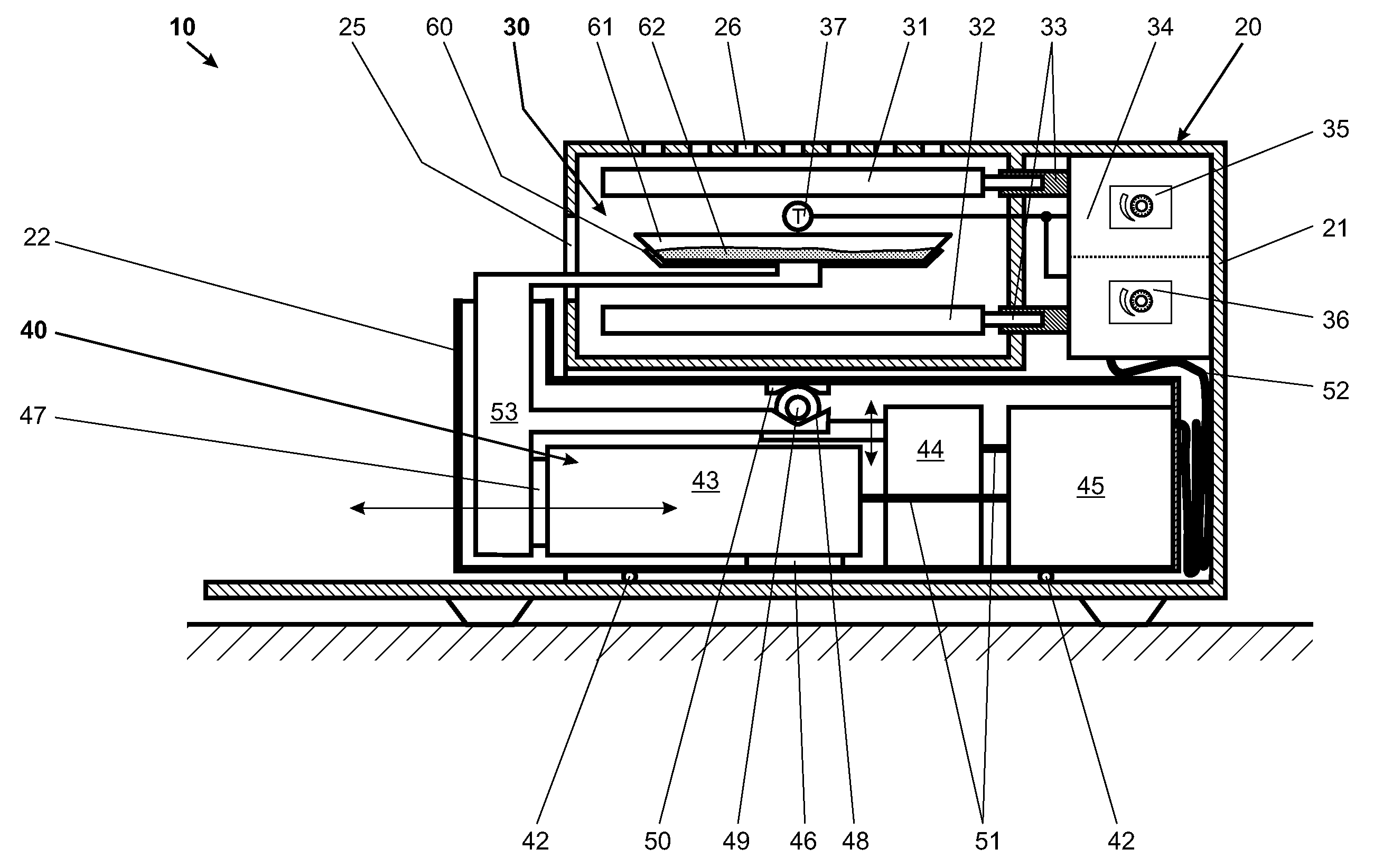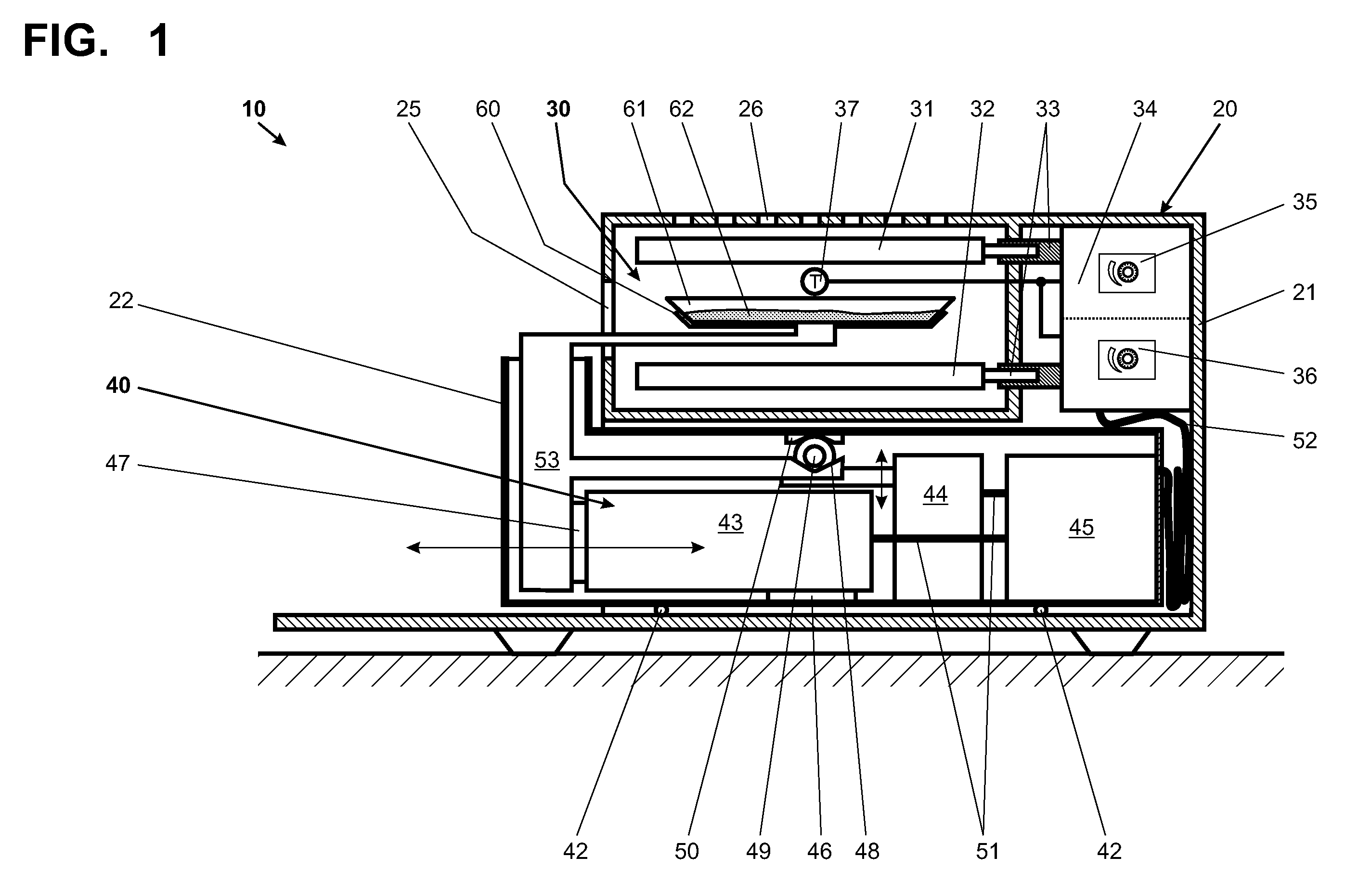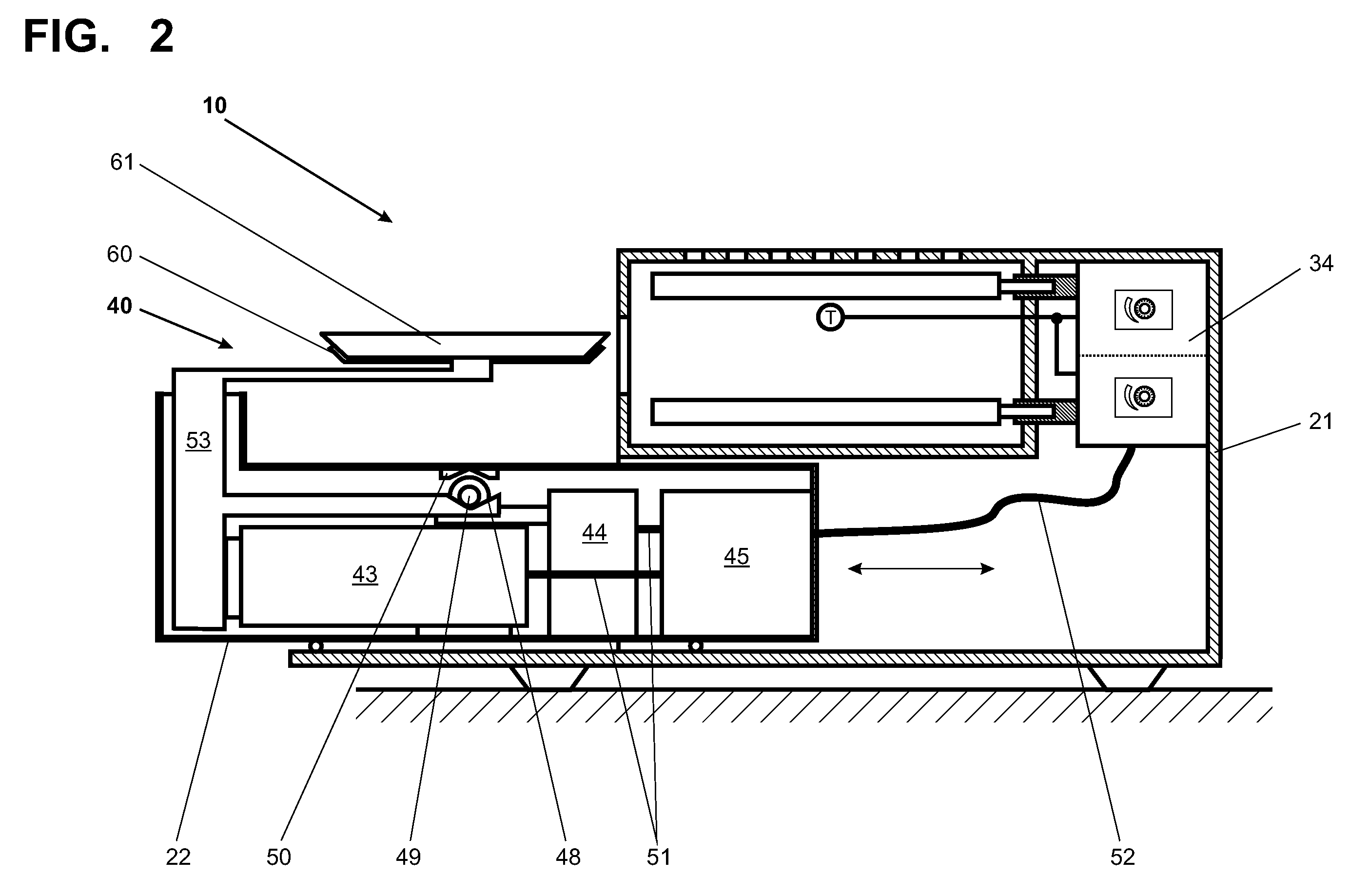Measuring instrument for gravimetric moisture determination
a technology of measuring instruments and moisture content, which is applied in the direction of instruments, lighting and heating apparatus, furniture, etc., can solve the problems of unavoidable variation in layer thickness from place to place, and achieve the effect of improving the reproducibility of comparison measurements and lowering the measured weight of samples
- Summary
- Abstract
- Description
- Claims
- Application Information
AI Technical Summary
Benefits of technology
Problems solved by technology
Method used
Image
Examples
first embodiment
[0079]FIG. 1, in a sectional view, illustrates a measuring instrument 10 in a The measuring instrument 10 has a housing 20 in which a test compartment 30 is arranged. The housing 20 is divided into a movable housing part 22 and a stationary housing part 21. Arranged below the test compartment 30 is a weighing device 40 on the movable housing part 22 which is constrained to a substantially horizontal mode of displacement. The movable housing part 22 glides on rollers 42 (shown only schematically) in the stationary housing 21. Of course, it is also possible to use commercially available drawer guides such as dual pull-out tracks and the like. The movable housing part 22 which is configured as a hollow shell contains a weighing cell 43, a calibration-weight-loading mechanism 44 and at least one electronic module 45 which are connected to each other through communicating means 51. The electronic module 45 contains at least one signal-processing module (not shown in detail here) and in ...
second embodiment
[0085]FIG. 3 represents a cross-sectional view of a second embodiment measuring instrument 110. A weighing device 140 arranged in the housing 120 has substantially the same elements as were named above in the description of FIG. 1 for the weighing device 40. The housing 120 is divided into a stationary housing part 121 and a movable housing part 122.
[0086]Unlike the arrangement of FIG. 1, the weighing device 140 is not arranged in a horizontally movable housing part but in the fixed housing part 121. The weighing device 140 is largely enclosed by the stationary housing part 121. Only a sample receiver 160 which is connected to the weighing device 140 protrudes from the stationary housing part 121 and reaches into the space of the movable housing part 122 when the latter is set in position for performing measurements. Receptacles of different shapes such as sample trays 162, crucibles and the like can be places on this sample receiver 160 which is ring-shaped.
[0087]The movable housin...
fourth embodiment
[0092]FIG. 5 shows a sectional view of the measuring instrument 310 in a A weighing device 340 which is arranged in the housing 320 has substantially the same elements as were described above for the weighing device 40 of FIG. 1. The housing 320 is divided into a stationary housing part 321 and a movable housing part 322. The movable housing part 322 is configured as a lid in which a first radiation source 331 is arranged. As described in the context of FIG. 3, there is a suction device 370 incorporated in the movable housing part 322 above the first radiation source 331. This movable housing part 322 is connected to the stationary housing part 321 through a hinge 329 in the upper portion of the housing 320, with the pivot axis of the hinge 329 being substantially horizontal. The movable housing part 322 forms the upper part of a test compartment 330.
[0093]The lower part of the test compartment 330 is formed in the stationary housing part 321. Arranged in the latter is a second rad...
PUM
 Login to View More
Login to View More Abstract
Description
Claims
Application Information
 Login to View More
Login to View More - R&D
- Intellectual Property
- Life Sciences
- Materials
- Tech Scout
- Unparalleled Data Quality
- Higher Quality Content
- 60% Fewer Hallucinations
Browse by: Latest US Patents, China's latest patents, Technical Efficacy Thesaurus, Application Domain, Technology Topic, Popular Technical Reports.
© 2025 PatSnap. All rights reserved.Legal|Privacy policy|Modern Slavery Act Transparency Statement|Sitemap|About US| Contact US: help@patsnap.com



